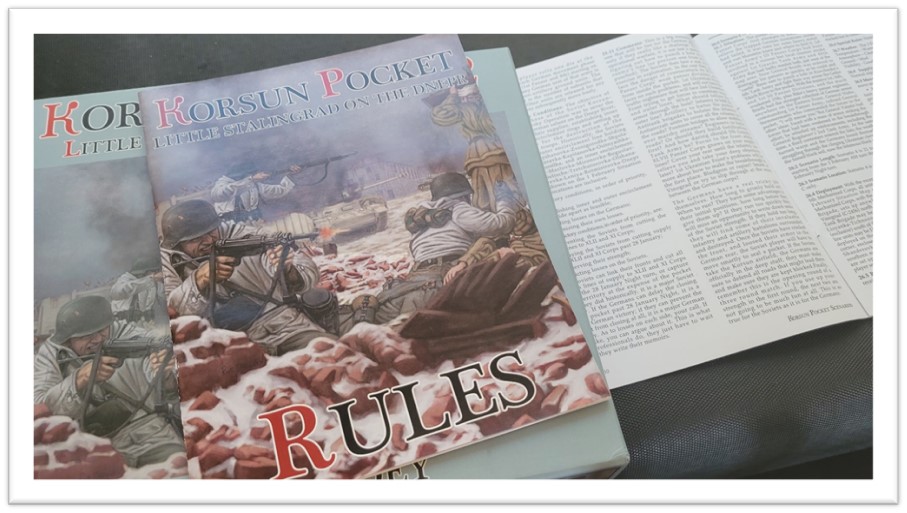
So its here. A pre production copy. They still require about 80-100 orders. So lets see what all the fuss is about and take a look at Pacific Rim Publishing’s latest release.
I’d encourage you to visit Stuka Joe for a prolific and detailed shrink-rip. No need for that here after his great videography.
So lets put a quick plan together.

I suspect the meat and indeed the value of that meat for this game is the campaign. However, I don’t have VASSAL for this and with the new digs it’s a non starter. Not enough room.
This bad boy clocks in at 4 maps. Which are oddly 25×38. Not the usual 24×36. Worth knowing for space required. There are also a LOT of charts for reinforcement and withdrawals, which for this game I think is a great idea.
As you can see above the four maps scrunched together, and situation sheets that show you in ‘military style’ where everyone was at certain dates. It’s a fascinating look at just how much area the Germans were attempting to defend and how quickly the pocket formed and collapsed.

Now these are also your setup ‘sheets’ or situation maps. You will use this and paragraph based scenario instructions to place units based upon the scenario.
I found this both interesting and almost whimsical in a way. We will be using apportion of one of these to setup scenario four. Which is called “I will Rescue You” a direct quote from General Hube. III Panzer Corp was going to bring the heavy metal. In fact the bulk of Eastern Front best armour was tasked with breaking out their compatriots.
The Soviets, the weather and the Gniloi Tikich River had other ideas. What I am keen to explore with this 2nd edition and my first exposure to the battle at this scale is [I’ve only played Jaws of Victory otherwise]; how do the games kinetic mechanics stand up to the history and to todays ‘modern’ approaches to design? Secondly I am curious about the interaction with the components, from maps to counters, charts and rulebook. The user experience with the game is key. We will use Scenario 4 to explore the game a one mapper. You can catch notes and replay video on the blog and YT all the usual locations on social. [Edit: Im currently on turn 9]
Rulebook
Jack is folksy. He kind of writes that way too. It is interesting. Makes the reading easy. He does make the point up front to NOT be GAMEY, even goes so far as to say don’t waste your money if you want to do that, and be nonsensical. I like that. If you take a game at face value and then try and do something that defies common sense and historically what happened of God forbid defies the laws of nature then yeah. You probably should not be even playing wargames. Reminds me of the Pacific War player who wanted to know if he could transfer a division at sea between amphib units…. Yep 10-14 000 guys and their kit. ‘But the rules don’t say you cannot.’ Or equivalent.
First read is straight forward. Assuming you have played an SPI wargame before or know what a Zone of Control [ZOC] is you will likely feel very at home very quickly. For instance, eZOCs force you to stop movement. They also are generally subject to terrain mandate combat, and they also however vary in intensity or stickiness. Strong ZOCs are multi unit stacks, that force an end to movement, but Weak ZOCs allow a movement penalty to be paid to continue movement for Armoured units. There are of course those unit types that have no ZOC. I will say there is a bit of repetition where probably not needed and some sections that could have borne repeating in more than one place.
The rules are densely worded, and as long as the charts fully support all the +/- for combat DRMs and column shifts etc we will be good to go. Interestingly there is a fair bit of detail that has gone into arty calibres, how artillery works in the game, how it moves and fights and doctrinally how it all comes together for each side is expressed in a few simple rules, that I will probably summarize out of the rulebook to save referencing. Any errors of omissions I’ve found I’ve pushed back to Radey. Some are welcomed…other suggestions on rule clarity, no so much! . Sometimes it just takes a bit of persistence with a person, when you questions 30 yrs of history of play. Ahem.

Combat is pretty simple, armour and AT capabilities matter, the usual suspects engineers to thwart fortifications, simple attack across river…..all that stuff generates column shifts in combat. The CRT cranks out all the way to 9:1. Many results are ‘retreats’.
There are also a lot of words used to explain the mostly abstract air. Which boils down to a variety of combat missions or logistics missions with a low probability of AA affecting much.
Minor update. I now have a copy of the KP 1 rules. One of the biggest things if you listen to Jack on any of his interviews is his revision of Supply. This was cleaned up a lot and now works much more smoothly for a game this size and at this level of complexity [MEDIUM to Light -Medium]. The game has a tonne of other features, such as fatigue if you attempt goofy stuff at night.
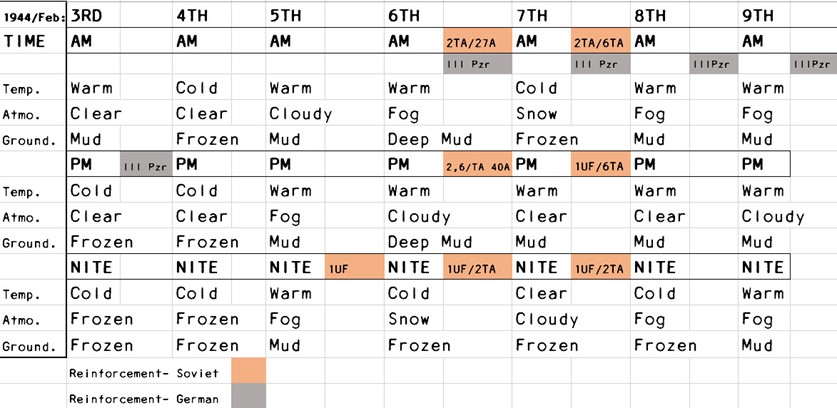
Temperature, Atmosphere conditions and Ground conditions based factors impact movement, combat and supply. I’m no fan of the artwork on the charts for KP2 for weather. Very challenging to read. So for the scenario I am going to play I made my own chart that is visually ready at a glance, versus guessing what the artists intent was. I’ve mentioned this to Jack and also pointed out some other items that will be fixed n the final release.
Visibility is also impact by weather and can allow for surprise attacks through fog, reduce arty impact and a number of other factors.
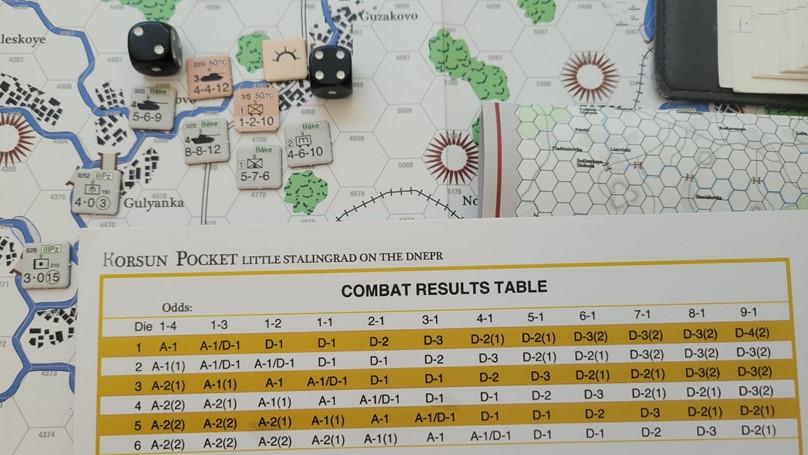
A fascinating item I found while reviewing some victory conditions that I glossed over in the rules – road building. Engineers can not only fix and break bridges but build roads. This had me looking to see if I could ‘building a supply’ route to enable the break through in Scenario 4 required. However Deep Mud ‘wipes’ out the engineering effort. You then must start again! Still very interesting to see that in a game. It’s the first other than Settlers of Catan to build roads in a wargame….wait? What? SoC aint a wargame? Come on guys. Use your imagination.
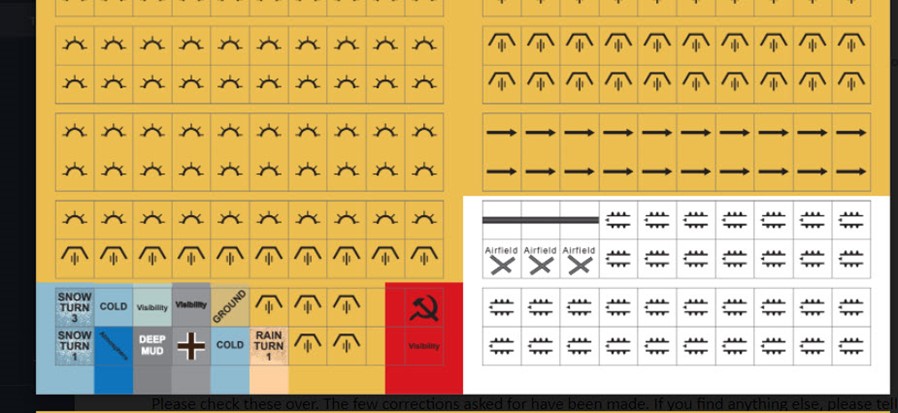
Ok, I’ve come back to this post to update. I ended up jumping directly into game play and skipping all the introductory stuff. Which has turned out great. As you dear readers have asked some great questions.
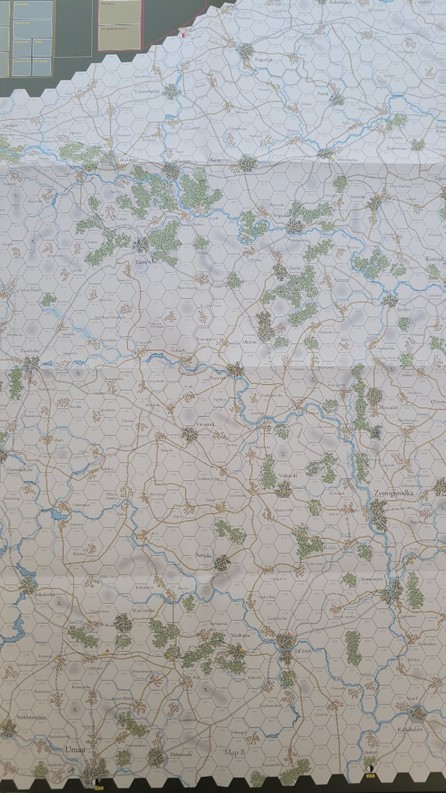
The biggest being about comparisons to Jaws of Victory [JoV]. Its not for me to say one over the other, but rather to highlight in the first instance some physical differences. KP2 has 4 maps logged at 1 mile a hex. JoV is 2 maps at 2 miles a hex. Both use a white background. But JoV uses gold color for towns etc.
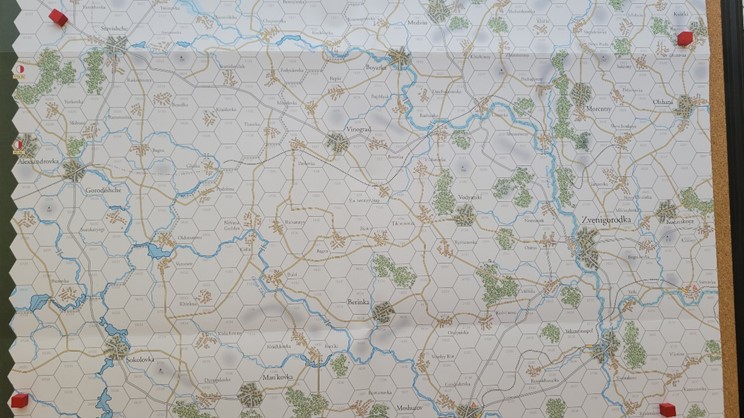
By way of example, Scenario 4, the current scenario I am playing uses a full map to roughly cover the area in blocks, for the Feb 4 through 10th relief effort by the Panzer Divisions. So very different scales.
Obviously unit scale is different also.
With Regiments and Brigades usually the smallest element where in KP2 is Battalions and in some cases companies. JoV uses 1 turn 1 day. KP2 uses AM/PM/Night and ‘extra night’ a push your luck and incur fatigue, exhaustion concept.
There are some historical differences, for units and capabilities. Jack outlined some factors that I have not been able to verify but I’d probably take his word for it that his order of battle at 2,400 counters is correct, versus the other chaps with 1100, just given Jacks ready access to source material for his books.
Game play mechanics. Here I guess is where the rubber meets the road. The Victory in the West System VITW is great. What I have seen in the JOV system is very detailed, and probably side by side a bit more laborious and mechanical than Radey’s effort but both give you a great feel for each sides capabilities. Bot have a focus upon Zones of control, and variations from the ‘normative’ ZOC ideas. Both have specific rules for armor and AT gun impact represented very differently, and both have an emphasis upon supply that impacts game play. Perhaps more so in KP2 than JOV. Its my assessment that KP2’s overall combat flow is simpler, and faster to implement without losing too much in the ‘tactical nuance, narrative generation matrix!
Where Rady’s title gets a bit more detailed is the weather, and its impact upon regular and column type road movement, how weather impacts visibility for arty air and combat, especially with fog is important and obviously how the ground conditions affect movement and combat are key too. Radeys game from what I recall of JoV feels more nuanced, and you can have either historical weather or roll for it.
A key differentiator is engineering. The ability to construct no only fortifications but improve or create roads is a significant game enhancer at this Battalion level of play. I can see it NOT making sense in JoV.
Radeys rules are black and white, two column and clock in at 28 pages of larger font writing. Vs 31 pages of 3 column full color smaller font, neither have an abundance of examples of play in the rulebook.
All right. That’s a quick summary for y’all.
Back to the dice.
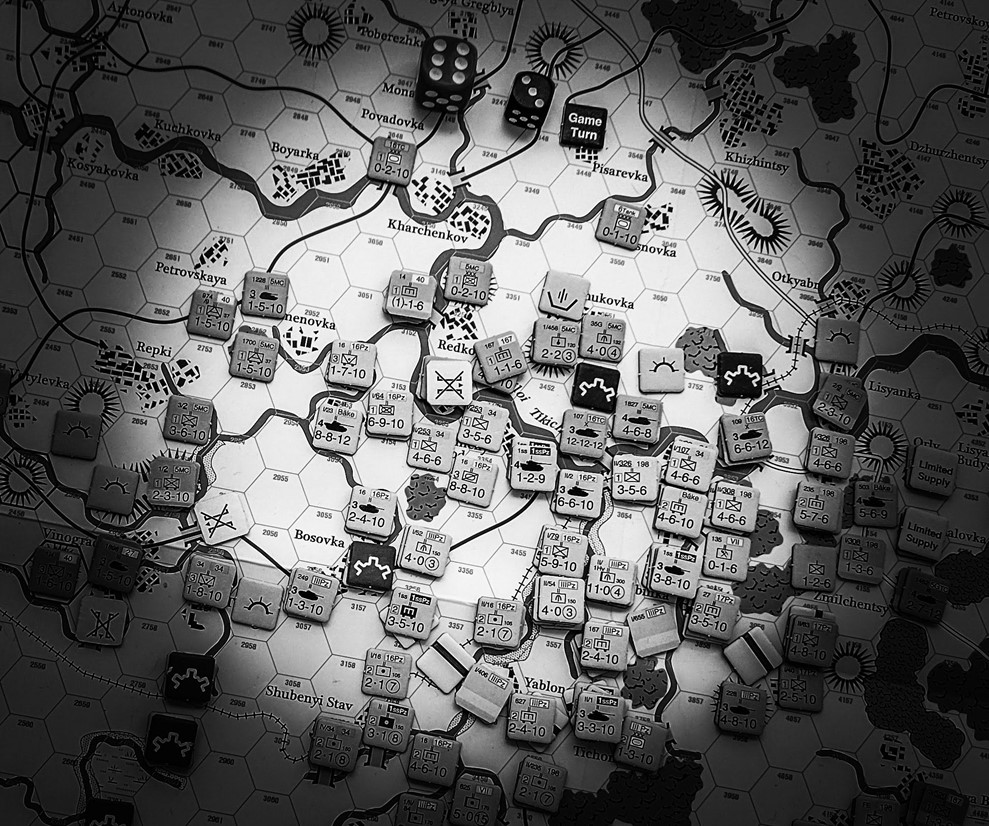
The Warlord Game allows you to build roads…. https://boardgamegeek.com/boardgame/1781/warlord-game

thanks